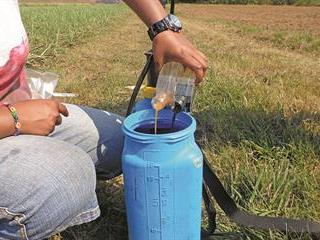
Plant parasitic nematodes were not identified as major pests until 1855, when pioneering mycologist and plant pathologist Miles Joseph Berkely discovered root knot nematodes on cucumbers. Four years later, botanist Hermann Schacht discovered cyst nematodes on sugar beet.
In the years since, nematodes have been shown to attack many crops throughout the world. The discovery of nematicides in the early 1900s provided growers with a reliable and effective control method. But due to their highly toxic nature and the risk they pose to applicators, nematicides have always been under scrutiny, despite agrochemicals being among the most heavily regulated products.
As a result, chemical companies have invested heavily in product stewardship and applicator training, as well as reducing the risk of applying these highly toxic chemicals. Despite rigorous testing and investment, and the fact that they consistently and reliably increase yield, nematicides still have a negative public image, and many growers accept lower yield rather than use them.
As a result of public and environmental pressure, the 1992 Earth Summit in Rio de Janeiro determined that pesticide use should be drastically reduced. Due to nematicides’ negative image, loss of revenue and the focus on sustainable agriculture, companies have focused on developing safer chemicals to control nematodes.
Two products containing two new active ingredients with different modes of action were launched at the 6th International Congress of Nematology (ICN) in Cape Town last year. This was the first new active ingredient to be registered against nematodes since in 1992. The new products are safer and add far less of the active ingredient to the soil.
There is also a far greater focus on integrated pest management – more biological control agents in combination with conventional nematicides. Products containing more than one active ingredient are also being developed and include a product containing an insecticide and nematicide currently being investigated by the South African Sugarcane Research Institute (Sasri).













